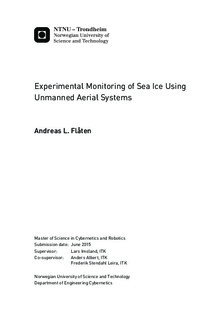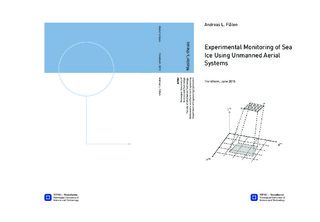| dc.description.abstract | The exploration of arctic seas for offshore oil- and gas resources has received increasing
interest the past few years. Despite the recent dramatic fall in oil prices,
estimates indicate that as much as 22% of the worlds remaining hydrocarbons are
located in arctic areas. Thus it is unlikely that the arctic areas will go largely
untouched the following decades. One of the main challenges of extracting hydrocarbons
in arctic areas is the abundance of sea ice that can cause damaging loads on
installations. An important part of oil exploration in these areas is thus the ability
to manage potentially damaging sea ice. The current methods for ice management
include manned helicopters and other aircraft for detection together with ships to
break up or drag away dangerous ice. The main objective of this thesis is to assess
the use of Unmanned Aerial Systems (UAS) to perform ice monitoring. An autonomous
Unmanned Aerial System for ice detection and mapping using a thermal
imaging sensor on a small fixed wing aircraft is proposed. The main contributions
of this thesis is a real-time Bayesian recursive algorithm for occupancy grid map
estimation representing sea ice. An expedition to Svalbard with several PhD and
master students from NTNU was originally planned in April 2015, but this was
canceled in March due to time constraints among the participants. The expedition
was a major source of inspiration for the methods developed, and an indoor
laboratory environment for on-board computer vision was developed
using the Robot Operating System (ROS) software framework. The setup included
a quadcopter with an on-board camera, and a motion capture system capable of
tracking the pose of the quadcopter at 120 Hz. The laboratory setup was used to
test much of the planned functionality for the Svalbard expedition. The developed
computer vision based map estimation algorithm is capable of running in real time on an on-board computer. As a part of
the preparation for the Svalbard excursion, a path planning framework developed
by PhD student Anders Albert was successfully tested in the laboratory setup.
The experimental results of the mapping algorithm were visually appealing, but
closer investigation revealed unsatisfactory accuracy. Using on-board navigational
systems alone to perform real-time mapping did not yield sucient accuracy for
practical use. Sources of error and means to improve the results in further work
were investigated. | |

